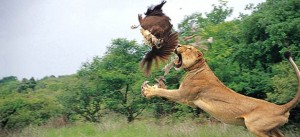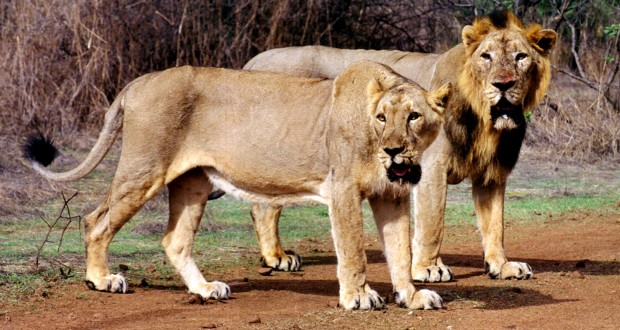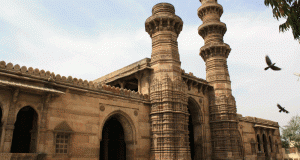This is one of the finest wildlife sanctuaries in India and the last natural refuge in the world of the majestic Asiatic lion PanKhera leo persica. The Gir Forest is one of the largest continuous tracts of land in India reserved for the conservation of its wildlife and contains an amazing abundance of animals, birds and flora. The terrain is extremely varied: open scrub country,  dry deciduous and tropical thorn forest, and evergreen corridors along the river beds. Gir had an original spread of some 5000 so km (1930 sq miles), but by 1969, when it was designated a wildlife sanctuary, this area had dwindled to just 1400 sq km (540 sq miles). The interior core of the forest (258 sq km; 100 sq miles) was constituted a national park in 1975.
dry deciduous and tropical thorn forest, and evergreen corridors along the river beds. Gir had an original spread of some 5000 so km (1930 sq miles), but by 1969, when it was designated a wildlife sanctuary, this area had dwindled to just 1400 sq km (540 sq miles). The interior core of the forest (258 sq km; 100 sq miles) was constituted a national park in 1975.
Within historic times, the Asiatic lion roamed the forests and open grassland as far afield as Greece in the west and Bengal and Bihar in the east. But human pressures led to a sudden, dramatic decrease in numbers. By 1884 there were no sightings of Asiatic lions outside the Gir Sanctuary. And by the turn of the century, the pitiful remainder of just 100 lions had been completely driven off their natural territory, the open scrub land, and confined to the very heart of the forest.
Then, in 1900, their fortunes revived. In that year, the Nawab of Junagadh invited rd Curzon, then Viceroy of India, to join him for a lion shoot at Gir. Curzon accepted the offer, but soon had occasion to regret it. An anonymous protest in a British newspaper, angrily complaining of the impropriety of a VIP doing further damage to an already endangered species,  not only persuaded Curzon to cancel his trip, but moved him to ask the Nawab to protect the remaining lions. The Nawab agreed, but it wasn’t till much later that concerted conservation efforts began. In 1948 hunting in the area was banned but in 1974 there were still just 180 lions in the sanctuary. However, with continuing efforts to save the species, the numbers have climbed to about 300.
not only persuaded Curzon to cancel his trip, but moved him to ask the Nawab to protect the remaining lions. The Nawab agreed, but it wasn’t till much later that concerted conservation efforts began. In 1948 hunting in the area was banned but in 1974 there were still just 180 lions in the sanctuary. However, with continuing efforts to save the species, the numbers have climbed to about 300.
The sanctuary is open to visitors from mid-October to mid-June. November to February is best for lion spotting: in the hot months, lions retreat to the cool interior of the forest, and sleep a lot. The July–September monsoon season is best for observing the rich variety of bird life. Times not to come are May–June, the Indian holiday season; and the big Diwali festival of late-October/early November, when tourists and pilgrims arrive in busloads, and accommodation becomes impossible.





